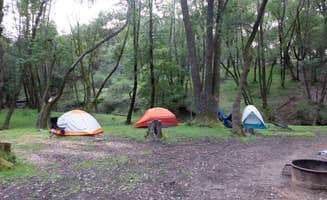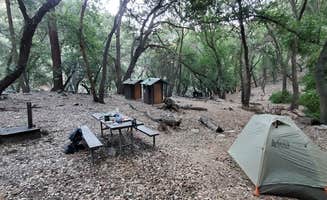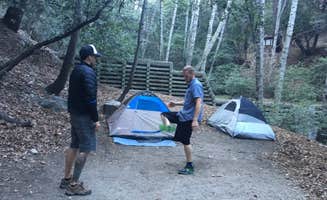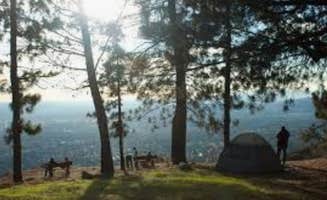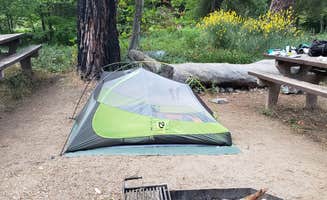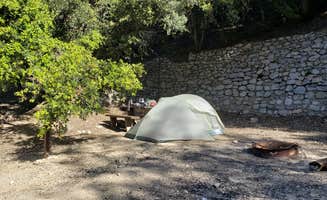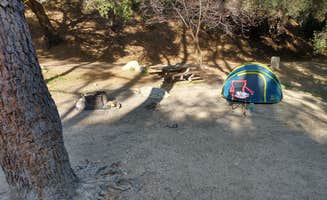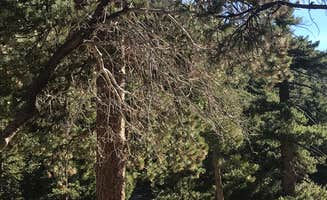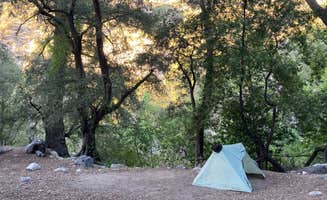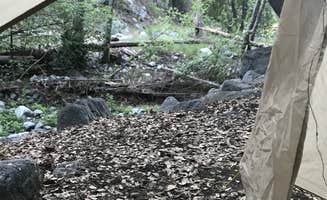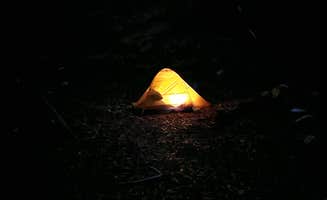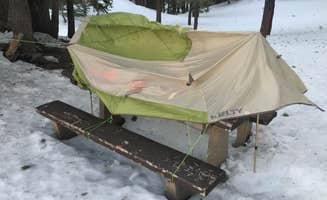The Angeles National Forest offers tent camping options near Brea, California at elevations ranging from 2,500 to 8,000 feet. Most backcountry sites sit between pine and oak forests, providing shade during summer months when temperatures frequently exceed 85°F. Winter camping requires preparation for overnight lows that can drop to freezing at higher elevations, particularly at sites above 5,000 feet.
What to do
Mountain biking trails: Valley Forge Trail Camp provides access to several biking routes that connect through the canyon. "The trail offers all the views, and the site handles the comforts. If your running low of your water supply, visit the nearby stream, just always remember to treat before you taste," notes David F. about Valley Forge Trail Camp.
Summit hiking: Many campgrounds serve as ideal base camps for peak bagging. "A short walk from little jimmy spring, where you can get water to filter. Also a short hike from mount baden Powell, mount Williamson & mount islip," explains Anthony K. about the Little Jimmy Trail Campground location, which connects directly to the Pacific Crest Trail.
Stream exploration: Several sites offer creek access for cooling off during hot months. One camper at Millard Trail Camp described their experience: "There's a creek that runs through the campground which makes it very pretty. About a 20 minute hike and you can end up at a waterfall which is very pretty."
What campers like
Seclusion with accessibility: Hoegees Trail Camp balances wilderness experience with reasonable access. "You can only access this campground by backpacking in. There's about 12 campsites with picnic benches and fire rings. There's a creek that runs through," shares Morgan F., who appreciates how it "feels completely isolated" despite the relatively short hike.
Diverse wildlife encounters: Campsites throughout the region provide opportunities for wildlife viewing. At China Camp State Park, Tim J. reports: "There are many hiking opportunities and chances to see wildlife (deer, wild turkey, rabbits, squirrels, racoons, and birds). Sites include fire pits, picnic tables, and food storage box."
Year-round camping options: Some sites remain accessible regardless of season. Brian T. noted about Little Jimmy Trail Camp: "Fantastic in the snowy season. Getting to Windy Gap usually requires spikes or crampons and axe, but it's well worth the effort. There's also year-round running water at Little Jimmy Springs."
What you should know
Fire restrictions vary significantly: Fire policies differ widely between sites and change seasonally. At Glenn Trail Camp, Andrew G. advises: "Very nice sites with tables bbqs and fire rings. No running water though, unless you count the creek thats no more than 50 yards away for the sites."
Wildlife requires proper food storage: Bears and raccoons present challenges at many sites. At China Camp State Park, Rosie C. warns: "The raccoons here are AGGRESSIVE! They won't attack you, but they will walk right up to your camp and try to steal your food. I stupidly left my tent unzipped for a few minutes to run up and use the bathroom at night and came back to find 2 rooting around my things."
Seasonal water availability: Water access varies dramatically throughout the year. Tom P. notes about Hoegees Trail Camp: "Campsite is very nice with enough sites for about 20 campers with a privy but no running water. There is a creek that might or might not have water in it. Bring a way of making the water potable."
Tips for camping with families
Start with shorter hike-in options: Mount Lowe Trail Camp provides a good introduction to backcountry camping. Tom P. suggests: "This is a hike in only campground that is secluded and a little spare. It has no running water but it does have facilities and tables. Fantastic views on a clear day."
Pack extra water for summer trips: Water sources may be limited during dry months. One camper at Mount Lowe noted: "No water right now but that could change after first rain or snow," highlighting the importance of carrying adequate water supplies, especially when camping with children.
Choose sites with established facilities: Some backcountry sites offer more amenities than others. David F. described Hoegees: "This facility has 15 campsites, each with table, fire ring and wood-burning stove. You must pack your garbage out. Site is shady year round with perennial water."
Tips from RVers
Limited options for motor vehicles: Most tent camping near Brea requires hiking in, making it unsuitable for traditional RV camping. At Manker Campground, Mallory V. explains the limitations: "Small tent and motorhome campground with firepits, water spickets, bathrooms (they get very dirty on the busy weekends, beware!). Lots of hiking nearby, close to Baldy Lodge."
Consider nearby developed alternatives: When backcountry camping isn't suitable, nearby state beaches offer alternatives. At Doheny State Beach Campground, Paul N. notes: "Beautiful beachfront camping steps from the sand. Dry camping with a dump station available. Great sunsets and beautiful sand."
Park access timing matters: Many backcountry areas have limited parking with time restrictions. Andrei K. learned this the hard way at Mount Lowe: "The road has a gate on it, which is locked 8pm-6am. That was day 1 (we slept in our car). Once past that gate, you'll soon hit another, this one closed to all motorized vehicles."


